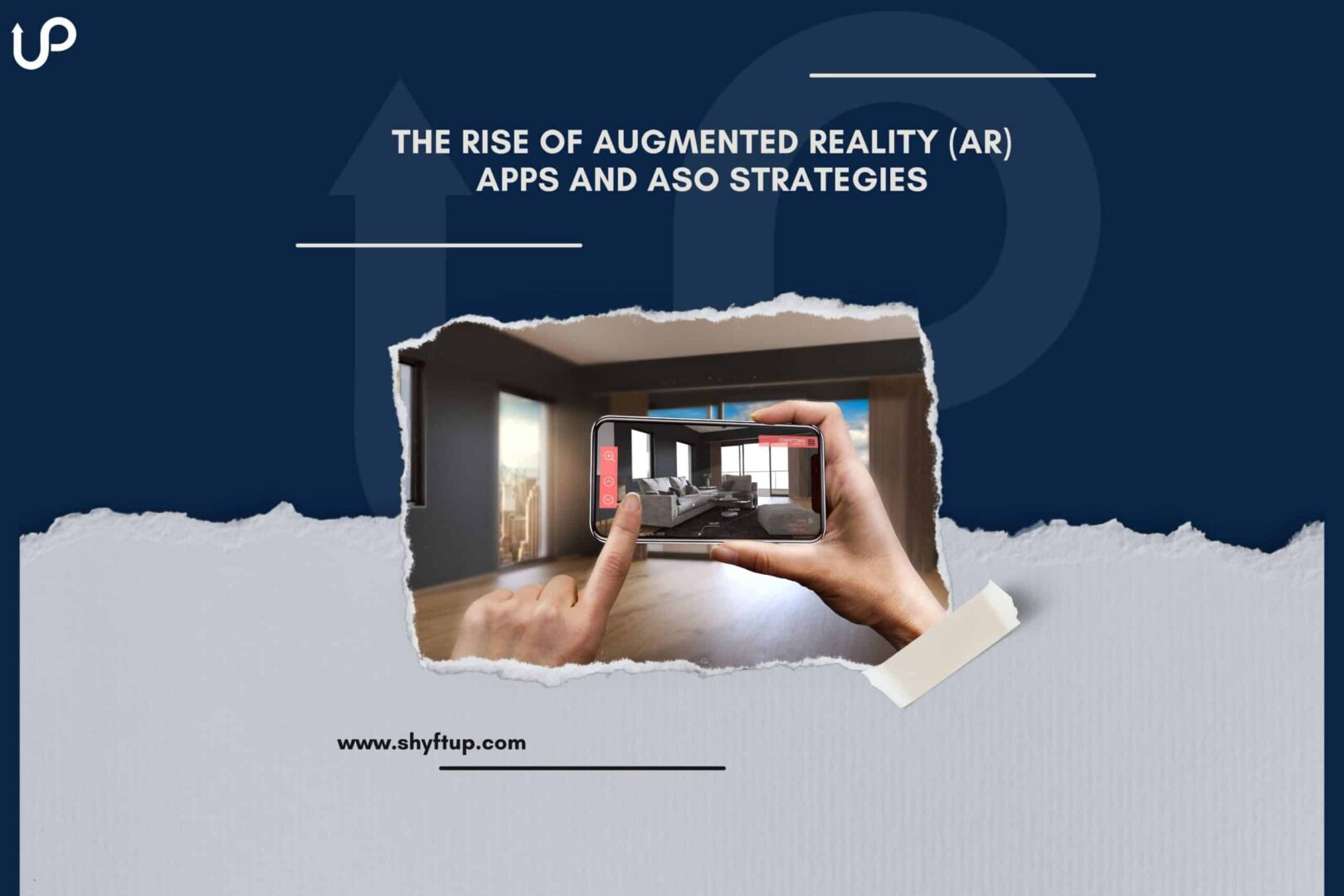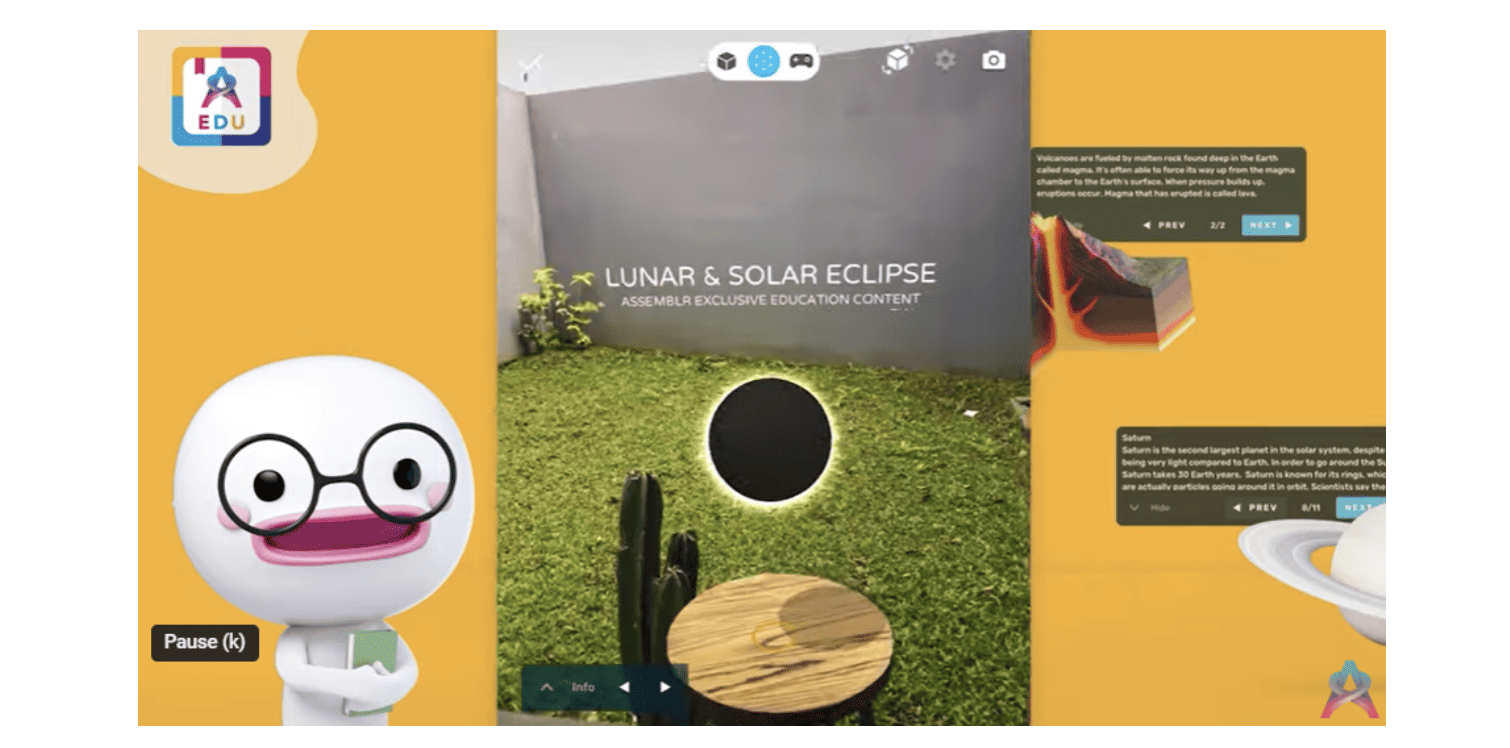
In the fast-evolving landscape of mobile technology, Augmented Reality (AR) has emerged as a groundbreaking force, transforming how we interact with digital content. From gaming and education to retail and healthcare, AR applications are on the rise, captivating users with immersive experiences. As the demand for AR apps grows, developers and marketers turn to App Store Optimization (ASO) strategies to ensure their creations stand out in the crowded app marketplace.
So, with the growing popularity of AR, what might the future hold for it? How does it affect mobile app development and marketing? How can you use ASO to ensure the success of your AR app? Let’s dig deeper to find the answers to these crucial questions.
What are Augmented Reality (AR) Apps?
Augmented Reality (AR) apps leverage augmented reality technology to enhance the user’s real-world environment by overlaying computer-generated information or visuals onto it. Unlike virtual reality, which immerses users in a completely virtual environment, augmented reality enhances the physical world by adding digital elements.
The number of AR users has steadily climbed during the past years. According to AR Insider, in 2019, the count of active AR user devices hovered around 0.44 billion. By 2021, this figure nearly doubled, reaching 0.81 billion. Fast-forward to 2023, and the tally of active AR user devices has surged to 1.4 billion. You can anticipate a monumental leap by 2024, as projections indicate a staggering climb to 17.3 billion AR user devices in active use.
To better understand what AR is, here are its key characteristics:
Real-time Interaction
AR apps provide real-time interactions by superimposing digital content onto the user’s view of the real world. This interaction often occurs through the camera of a mobile device, such as a smartphone or tablet.
Integration of Digital and Physical Worlds
AR apps merge digital information, such as 3D models, text, or animations, with the physical surroundings in a way that allows users to see both simultaneously.
Spatial Awareness
AR apps are designed to understand and interact with the user’s physical environment. They may use technologies like GPS, sensors, and cameras to place virtual elements within the context of the real world.
Various Applications
AR technology has applications across various industries, including gaming, education, healthcare, retail, and more. AR apps can be used for gaming experiences, interactive learning, virtual try-ons for shopping, navigation, and even medical training.
What are examples of AR apps?
AR apps are now a reality in mobile apps. In fact, you might have even used them already without even knowing it. To help you get familiar with AR apps, here are some examples that should interest you:
Gaming AR apps
One of the most prevalent applications of AR apps is within the gaming category. A prime illustration of this is Pokémon GO, a widely popular game utilizing AR to situate Pokémon characters in real-world locations. This encourages players to explore their surroundings, engaging in the pursuit of finding and catching virtual creatures.

By the close of 2016, this mobile app had solidified its status as one of the most widely utilized and most profitable in the industry, boasting a staggering 500 million global downloads.
Business AR apps
AR apps have become a profit booster for many businesses. One good example is the IKEA Place. This app allows users to visualize how furniture items will look in their homes by superimposing 3D models of IKEA products into the real-world environment through the device’s camera.

Navigation AR apps
Augmented reality has also become a game-changer in navigation. An example is the Google Maps AR Navigation. This feature uses AR to provide real-time, turn-by-turn navigation by overlaying directions on the live camera view, helping users navigate and find their way more intuitively.

Education AR apps
Various educational apps use AR to make learning more engaging. For example, AR can bring historical events to life, enable virtual dissections, or provide interactive lessons in subjects like science and mathematics.
Check out Assemblr EDU. It is a platform designed to elevate the learning experience for both students and teachers through the realms of 3D and Augmented Reality (AR).

How are AR apps reshaping user expectations in app stores?
Augmented Reality (AR) apps fundamentally reshape user expectations in app stores by introducing a new dimension of interactivity, engagement, and personalized experiences. Here’s how AR apps are influencing and transforming user expectations:
Enhanced User Engagement
AR apps offer immersive and interactive experiences, capturing users’ attention in ways traditional apps might not. Users now expect a level of engagement beyond static interfaces and routine interactions.
Innovative and Entertaining Content
The introduction of AR has raised the bar for creativity and entertainment in mobile apps. Users now expect apps to offer innovative and entertaining content that goes beyond the conventional, driving developers to push boundaries and deliver unique experiences constantly.
Real-Time Interaction with the Environment
AR apps enable real-time interaction with the user’s environment. This has created an expectation for apps to respond dynamically to changes in the physical world, fostering a sense of immediacy and responsiveness that users now seek.
Increased Social and Collaborative Features
Many AR apps incorporate social and collaborative elements, allowing users to share their augmented experiences with others. This has led to an expectation for apps to be more socially connected, encouraging users to engage and interact with friends or the broader community.
Educational and Informative Value
AR apps in education, tourism, and other sectors provide users with informative and educational content in an engaging manner. As a result, users now look for apps that not only serve their functional needs but also offer educational value in an interactive format.
Increased Demand for AR-Enabled Features
The success and popularity of AR apps have created a demand for AR-enabled features across various app categories. Users expect developers to explore how AR can enhance their app experiences, whether in gaming, shopping, navigation, or other domains.
In essence, AR apps have raised the user experience bar by introducing a layer of interactivity, personalization, and immersion. As a result, users in app stores now seek apps that go beyond traditional functionalities, delivering experiences that leverage the power of augmented reality to transform how they engage with digital content.
ASO Strategies for AR apps
Although AR apps have a different selling point, they are still mobile apps, and the way you promote them in the app stores would be similar to how you promote other apps. So, whatever you learned about ASO, you can definitely apply it here.
Here are some of the most important ASO strategies that will optimize AR apps for better visibility and downloads:
- Keyword Optimization: Research relevant keywords related to your AR app’s functionality, features, and target audience. Include these keywords in your app title, subtitle, keyword field (for iOS), and description to improve search visibility.
- Compelling App Title and Icon: Create a clear and compelling app title that reflects the essence of your AR app. Design an eye-catching icon that stands out in the app store, making users curious about the immersive experiences your app offers.
- Informative App Description: Craft a concise and informative app description that highlights the unique features and benefits of your AR app. Clearly communicate how your app enhances user experiences and why it stands out from competitors.
- High-Quality Screenshots and Videos: Use visually appealing screenshots and videos to showcase the AR experiences within your app. Clearly demonstrate how users can interact with the augmented content and emphasize the app’s user interface.
- Include AR-Specific Details: Explicitly mention AR-related features in your app description. Explain how users can engage with augmented content, the practical applications of your AR features, and the benefits they will gain.
- Encourage User Reviews and Ratings: Positive reviews and high ratings contribute significantly to your app’s credibility and visibility. Encourage satisfied users to leave reviews and respond promptly to feedback. Addressing concerns and continuously improving your AR app can positively impact its ranking.
- Frequent Updates: Regularly update your AR app with new features, enhancements, and bug fixes. App stores favor apps that are actively maintained, and frequent updates show users that the app is continuously evolving and improving.
- Localization: Optimize your app for different languages and regions. This helps your AR app reach a broader audience, especially considering the global nature of app stores.
- Utilize App Preview Videos: If applicable, create engaging app preview videos that showcase the AR experiences within your app. These videos can provide potential users with a glimpse of what to expect, potentially increasing download conversions.
- Social Media Presence: Leverage social media platforms to create awareness and generate interest in your AR app. Share engaging content, teasers, and user testimonials to build a community around your app. This should indirectly improve your ASO campaign.
By implementing these ASO strategies tailored to augmented reality, you can enhance the visibility of your AR app in app stores, attract a wider audience, and ultimately drive more downloads.
Bring your AR app to the next level
Augmented Reality apps have the potential to make a significant impact in the app industry. However, navigating the landscape and promoting your app successfully can be challenging amidst the millions of existing applications.
Fortunately, ShyftUp is here to support you. With their valuable experience and expertise, they can assist you in creating the best AR app. ShyftUp offers guidance in App Store Optimization, ensuring your app receives the attention it deserves. By partnering with ShyftUp, you’ll witness substantial improvements not only in your app’s popularity but also in its overall performance.
Take the leap and give ShyftUp a try by booking a demo today!
What are Augmented Reality (AR) Apps?
Integration of Digital and Physical Worlds
How are AR apps reshaping user expectations in app stores?
Innovative and Entertaining Content
Real-Time Interaction with the Environment
Increased Social and Collaborative Features
Educational and Informative Value